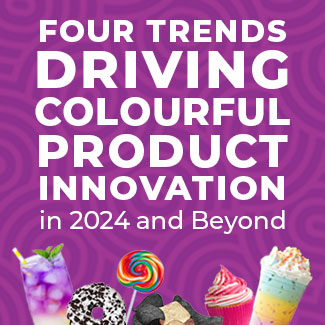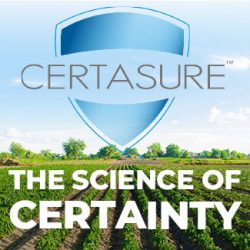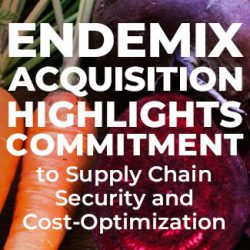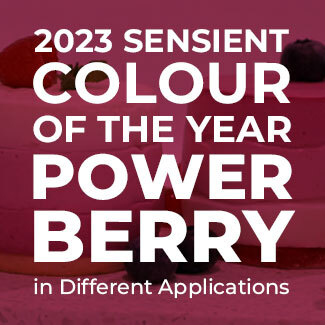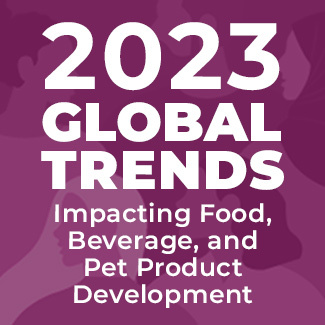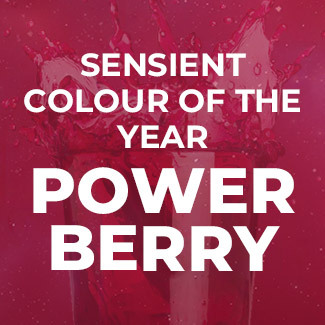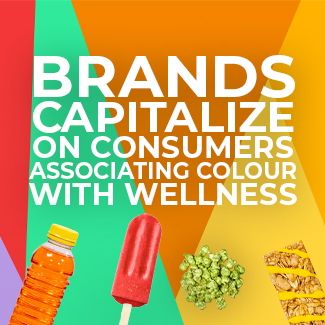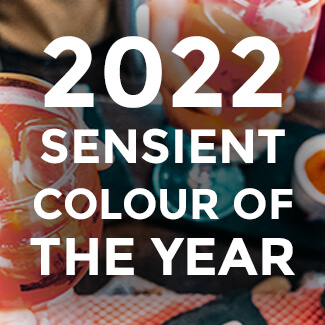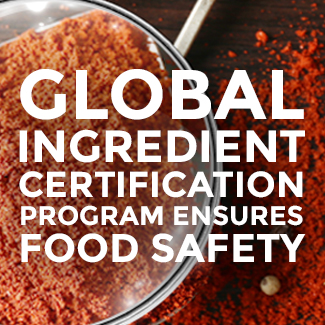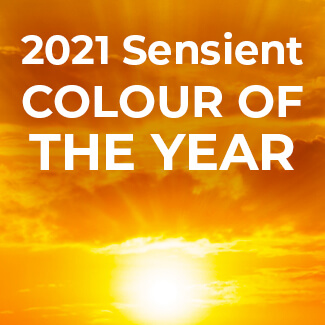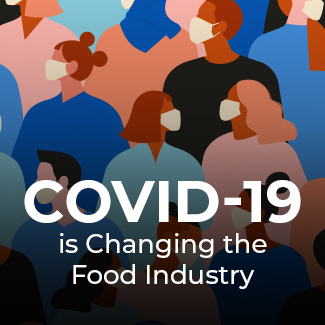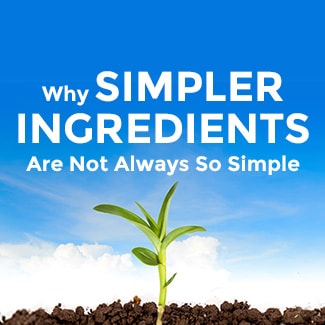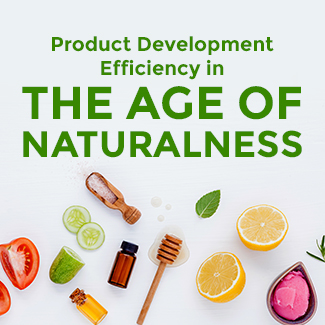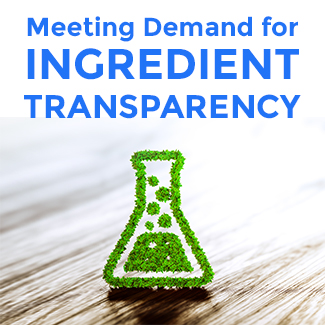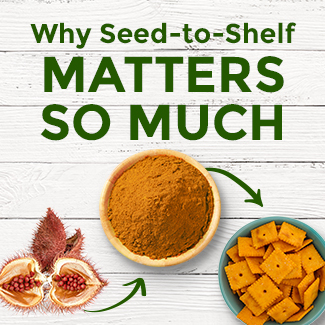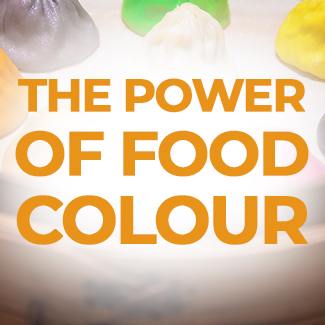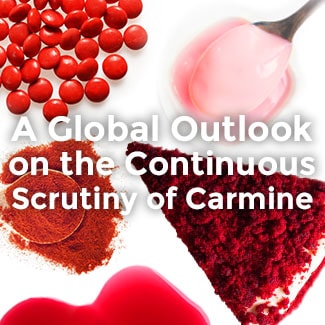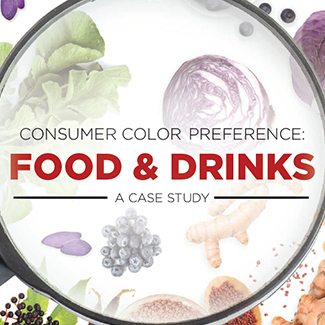The Food Industry Seeks Options to Address Recent Titanium Dioxide Trends
Globally, the food industry is leveraging macro trends around consumer interest for colours derived from botanical sources to innovate and renovate products. In Europe, as well as other regions we are seeing interest in fruit and vegetable juices that qualify as colouring foods. In the Americas and parts of Asia, many food manufacturers are beginning to transition to juices and other colours derived from natural botanical sources too.
While the transition to ‘cleaner’ ingredients, especially colour, is mainly in response to consumer demand, we are also seeing a growing number of food manufacturers showing interest in finding alternatives to Titanium Dioxide for other reasons.
More and more Titanium Dioxide (TiO2) is finding itself in the spotlight of advocacy groups in both Europe and the United States. The U.S. based organization, As You Sow, for example, is using shareholder activist type techniques to pressure food and beverage companies to eliminate TiO2 from products. Similarly, France’s National Institute for Agronomic Research (INRA) has published research questioning the use of TiO2 in food products.
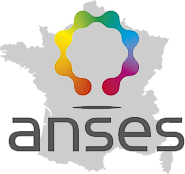 Today, at least in part because of these groups’ activities, titanium dioxide is once again under analysis by some regulatory bodies. These activities tend to increase a negative perception for the future of TiO2 as a go-to colourant. In the U.S., titanium dioxide is recognized as a safe colourant, as long as the amount of TiO2 in the finished food product does not exceed more than 1% of the final product weight, according to the US Food and Drug Administration (FDA). Titanium dioxide is also an approved food colour in Mexico, Venezuela, Canada, China, Japan, Australia, and New Zealand. Additionally, the European Food Safety Authority (EFSA) previously concluded as recently as 2016 that TiO2 is unlikely to constitute a health risk for consumers.
Despite the broad global regulatory acceptance of titanium dioxide, there is a lot of current discussion around the status of TiO2 in France and by extension, the European Union. The French Agency for Food, Environmental, and Occupational Health and Safety (ANSES) initially submitted a dossier to the European Chemicals Agency (ECHA) in May of 2016. While both the European Food Safety Association (EFSA) and ECHA indicated there was not enough evidence to support the ANSES proposal, uncertainty about the regulatory future for TiO2 continues in the Europe Union.
There’s no doubt the debate in Europe has placed food manufacturers in a difficult position, and hopefully there will be more clarity in the near future. But from my perspective, the innovative resilience of the food and beverage industry always prevails in the end. While we wait for better clarity from global regulatory bodies, alternative solutions have been and continue being developed.
Reformulation can be a challenge given the excellent opacity and cost-in-use characteristics of titanium dioxide.
Today, at least in part because of these groups’ activities, titanium dioxide is once again under analysis by some regulatory bodies. These activities tend to increase a negative perception for the future of TiO2 as a go-to colourant. In the U.S., titanium dioxide is recognized as a safe colourant, as long as the amount of TiO2 in the finished food product does not exceed more than 1% of the final product weight, according to the US Food and Drug Administration (FDA). Titanium dioxide is also an approved food colour in Mexico, Venezuela, Canada, China, Japan, Australia, and New Zealand. Additionally, the European Food Safety Authority (EFSA) previously concluded as recently as 2016 that TiO2 is unlikely to constitute a health risk for consumers.
Despite the broad global regulatory acceptance of titanium dioxide, there is a lot of current discussion around the status of TiO2 in France and by extension, the European Union. The French Agency for Food, Environmental, and Occupational Health and Safety (ANSES) initially submitted a dossier to the European Chemicals Agency (ECHA) in May of 2016. While both the European Food Safety Association (EFSA) and ECHA indicated there was not enough evidence to support the ANSES proposal, uncertainty about the regulatory future for TiO2 continues in the Europe Union.
There’s no doubt the debate in Europe has placed food manufacturers in a difficult position, and hopefully there will be more clarity in the near future. But from my perspective, the innovative resilience of the food and beverage industry always prevails in the end. While we wait for better clarity from global regulatory bodies, alternative solutions have been and continue being developed.
Reformulation can be a challenge given the excellent opacity and cost-in-use characteristics of titanium dioxide.
 However, I am extremely encouraged by the work of Sensient’s innovation team who have actively been working on global compliant alternatives to TiO2 solutions for over 5 years now.
Our platform of opacity and whitening solutions are designed for virtually any application across most regions in the world.
The global Avalanche™ portfolio will address many concerns, challenges, and questions that may arise when replacing titanium dioxide and covers a wide breadth of applications, such as:
However, I am extremely encouraged by the work of Sensient’s innovation team who have actively been working on global compliant alternatives to TiO2 solutions for over 5 years now.
Our platform of opacity and whitening solutions are designed for virtually any application across most regions in the world.
The global Avalanche™ portfolio will address many concerns, challenges, and questions that may arise when replacing titanium dioxide and covers a wide breadth of applications, such as:
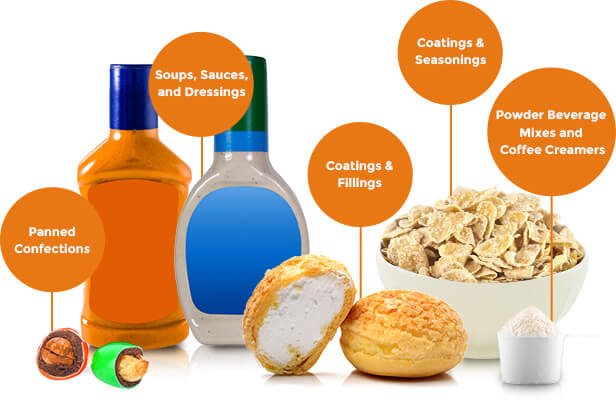 Of course, our team continues its work to deliver even better options but in the meantime I would encourage you to check out our Director of R&D’s blog on titanium dioxide replacement options available today and be sure to check back later in the year for additional updates.
As always, please don’t hesitate to contact our chemists or account managers at any of the Sensient locations if you have questions or would like to begin trial work.
Of course, our team continues its work to deliver even better options but in the meantime I would encourage you to check out our Director of R&D’s blog on titanium dioxide replacement options available today and be sure to check back later in the year for additional updates.
As always, please don’t hesitate to contact our chemists or account managers at any of the Sensient locations if you have questions or would like to begin trial work.
 Today, at least in part because of these groups’ activities, titanium dioxide is once again under analysis by some regulatory bodies. These activities tend to increase a negative perception for the future of TiO2 as a go-to colourant. In the U.S., titanium dioxide is recognized as a safe colourant, as long as the amount of TiO2 in the finished food product does not exceed more than 1% of the final product weight, according to the US Food and Drug Administration (FDA). Titanium dioxide is also an approved food colour in Mexico, Venezuela, Canada, China, Japan, Australia, and New Zealand. Additionally, the European Food Safety Authority (EFSA) previously concluded as recently as 2016 that TiO2 is unlikely to constitute a health risk for consumers.
Despite the broad global regulatory acceptance of titanium dioxide, there is a lot of current discussion around the status of TiO2 in France and by extension, the European Union. The French Agency for Food, Environmental, and Occupational Health and Safety (ANSES) initially submitted a dossier to the European Chemicals Agency (ECHA) in May of 2016. While both the European Food Safety Association (EFSA) and ECHA indicated there was not enough evidence to support the ANSES proposal, uncertainty about the regulatory future for TiO2 continues in the Europe Union.
There’s no doubt the debate in Europe has placed food manufacturers in a difficult position, and hopefully there will be more clarity in the near future. But from my perspective, the innovative resilience of the food and beverage industry always prevails in the end. While we wait for better clarity from global regulatory bodies, alternative solutions have been and continue being developed.
Reformulation can be a challenge given the excellent opacity and cost-in-use characteristics of titanium dioxide.
Today, at least in part because of these groups’ activities, titanium dioxide is once again under analysis by some regulatory bodies. These activities tend to increase a negative perception for the future of TiO2 as a go-to colourant. In the U.S., titanium dioxide is recognized as a safe colourant, as long as the amount of TiO2 in the finished food product does not exceed more than 1% of the final product weight, according to the US Food and Drug Administration (FDA). Titanium dioxide is also an approved food colour in Mexico, Venezuela, Canada, China, Japan, Australia, and New Zealand. Additionally, the European Food Safety Authority (EFSA) previously concluded as recently as 2016 that TiO2 is unlikely to constitute a health risk for consumers.
Despite the broad global regulatory acceptance of titanium dioxide, there is a lot of current discussion around the status of TiO2 in France and by extension, the European Union. The French Agency for Food, Environmental, and Occupational Health and Safety (ANSES) initially submitted a dossier to the European Chemicals Agency (ECHA) in May of 2016. While both the European Food Safety Association (EFSA) and ECHA indicated there was not enough evidence to support the ANSES proposal, uncertainty about the regulatory future for TiO2 continues in the Europe Union.
There’s no doubt the debate in Europe has placed food manufacturers in a difficult position, and hopefully there will be more clarity in the near future. But from my perspective, the innovative resilience of the food and beverage industry always prevails in the end. While we wait for better clarity from global regulatory bodies, alternative solutions have been and continue being developed.
Reformulation can be a challenge given the excellent opacity and cost-in-use characteristics of titanium dioxide.
 Of course, our team continues its work to deliver even better options but in the meantime I would encourage you to check out our Director of R&D’s blog on titanium dioxide replacement options available today and be sure to check back later in the year for additional updates.
As always, please don’t hesitate to contact our chemists or account managers at any of the Sensient locations if you have questions or would like to begin trial work.
Of course, our team continues its work to deliver even better options but in the meantime I would encourage you to check out our Director of R&D’s blog on titanium dioxide replacement options available today and be sure to check back later in the year for additional updates.
As always, please don’t hesitate to contact our chemists or account managers at any of the Sensient locations if you have questions or would like to begin trial work.



